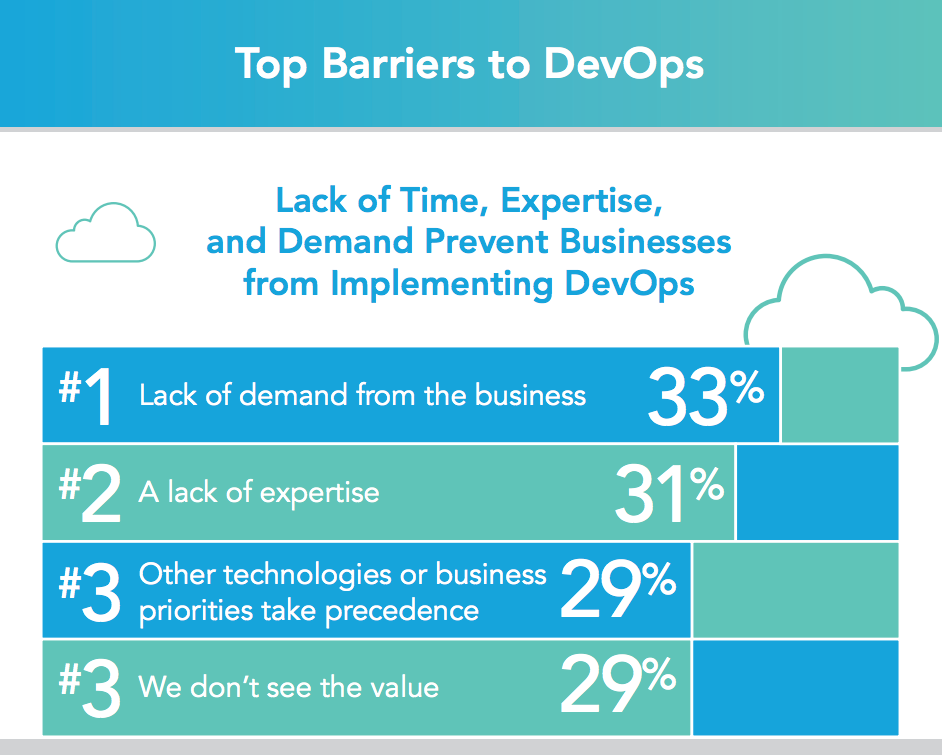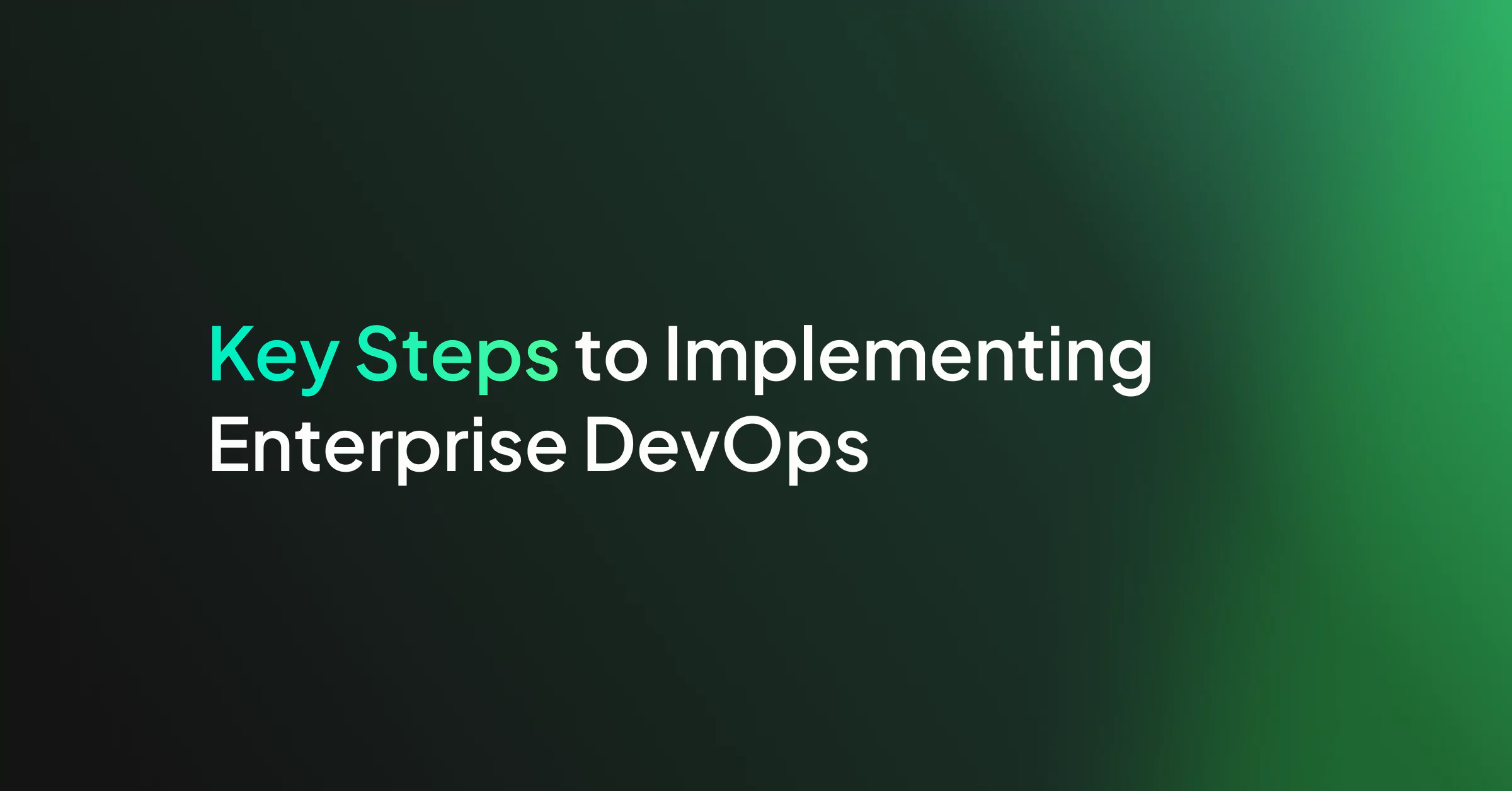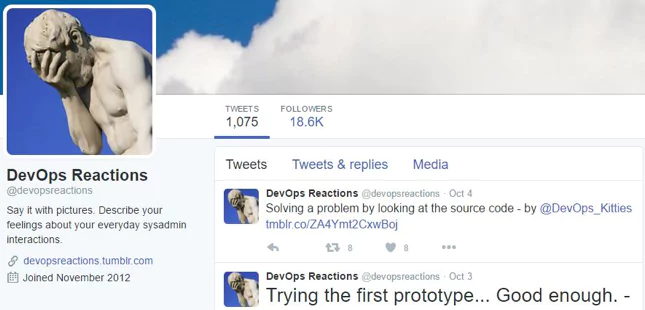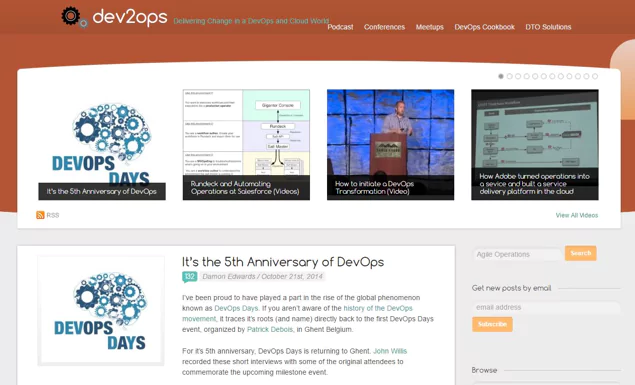DevOps: 10 Explanations That Get It Perfectly Right
Describing your profession to other people is never easy, especially if you work in the development field. Non-technical people often lack the understanding and terms that may seem just so obvious to you. And if you’re a DevOps expert, multiply the struggle times 10.
To help, we’ve put together a cheat sheet style post to explain DevOps to non-technical people. Send this to your friends and family or reference a section, the hope is that you will be able to explain what it is you do in half the time it usually takes you. We also hope others will realize that DevOps is one of the most critical – and misunderstood – elements of business today.
Rundown on DevOps
DevOps is the combination of Development & Operations. It’s a process used to create better products, which is done by streamlining communication between those who build the product, and those who are responsible for its functioning. DevOps is much more than a “profession” though, it’s a culture, a new way of thinking. And in order to be effective, DevOps has to be a part of an organization’s DNA.
Cheat Sheet
Here is a list of ways to explain DevOps to 10 different people. After all, explaining what DevOps is to non-techies is almost as hard as actually being a DevOps practitioner!
- Your Mom
You: So Mom, remember when X (replace with your little sibling’s name) was born and you told dad that you need a new car, only to come home and see he had bought a Coupé?
Well, that’s Dad being a typical developer, racing away to build an advanced product. And the car, well, that’s like the product itself. If Dad had communicated with an Operations expert (you, Mom), and had a DevOps mindset, he would have bought a car with a trunk that could actually hold a stroller.
- A 6-year Old
You: Why are you crying?
6-year old: I built a 6ft Lego tower
You: Wow, that’s pretty amazing, where is it?
6-year old: (crying) On the living room floor. Broken to pieces
(Silence)
6-year old: “She did it!” (Pointing at 9-month old sister who just crawled into the room)
You guessed it. The Lego tower is – well, was – the product. The 6-year old is the developer, and the 9-month old is malicious software exploiting a security breach. DevOps would have been you and the 6-year old talking before building the tower, agreeing to build the Lego tower (product) in their room, where it’s safe from little siblings (malicious software).
- Your Teenager
You: You know why we don’t let you have parties at home anymore, right?
Teenager: Oh come on… it was like 2 decades ago!
You: 2 months ago, for starters. And we’re still paying for the damage your 70 friends did to the living room.
In this scenario, your house is the product, and the living room is a server, with capacity for 30 people, max. DevOps would be your teenager understanding the living room’s limitations and taking the party to the backyard when the living room was getting too full.
- A Traffic Officer
You: Imagine you’re on highway patrol, and everything looks normal. Just regular people driving straight in their lanes. Then, all of the sudden, you see someone swerving back and forth across lanes. So, of course, you pull them over to make sure they aren’t drunk.
Well, that’s DevOps. Everyone on the road is like data acting the same way it did yesterday, and the day before, and the day before that. The drunk driver is data that behaves differently than what you expect (an anomaly) and alerts you to investigate further. And the traffic officer is the DevOps engineer ensuring everything continues to run smoothly when something is off.
- Your Grandmother
You: Remember how you used to spend hours walking around malls looking for Christmas presents for us?
Grandmother: Yes, of course, dear.
You: And isn’t it great that Mom now sends you links to Amazon, and you just order everything online?”
Grandmother: Oh yes, I love seeing you wearing the sweater I bought you!
Your Mom showing your Grandmother a smarter and more efficient way of shopping for gifts is what DevOps is all about. It’s making sure you create the right product according to your customers’ needs (even though not every generation may understand it).
- Your Local Grocery Store Cashier
You: You know when you want to cancel a product, but then have to call the main cashier to swipe their card for permission?
Cashier: Yes, it’s the most frustrating and time-consuming problem.
In this scenario, you, the cashier, are the developer, wanting to revert something on production, and the main cashier is the DevOps.
- Your Waiter/Waitress
You: Do you aim to bring your customers their food as fast as possible?
Waiter/Waitress: Yes, of course!
You: Would you bring a customer their drink after they’ve already finished their food?
Waiter/Waitress: No of course not. What would be the point?
It may seem obvious, but a waiter or waitress delivering a customer their food without their drink would be a software developer. They’re aiming to deliver right away even though delivering one without the other doesn’t do anyone any good. Making sure customers get a perfectly cooked burger, together with their soda for the perfect experience, now that’s what DevOps is all about.
- Your Uber Driver
You: Remember that time you picked up that drunk guy who wanted to put a box in your trunk?
Uber Driver: Yes…
You: And then the box turned out to be full of beer bottles that broke and ruined your trunk?
Uber Driver: It’ll be awhile until I forget that!
You: And remember how you couldn’t work for a week afterward because you had to clean up the car and get rid of the smell?
Uber Driver: Yes, thanks for bringing it up again.
Your car is the product, and the drunk dude is a new developer who wanted to push code on a Friday afternoon. A DevOps expert would be the drunk guy’s (sober) friend telling you (the Uber Driver) that he is drunk and that you should be careful because that box can break and ruin your trunk.
- Your Dog (in the case he/she speaks English)
“Rover, giving me the signal that you need to poop, then waiting by the door for me to get ready and take you out, that’s classic DevOps. Who’s a good boy!?”
- Your Cat ( in the case he/she gives a damn about what you do)
“When you spend hours observing the front deck just in case a mouse tries to sneak in the house, that’s DevOps.”
Changing Your View
We hope this post has been not only enjoyable to read, but useful in giving you ways to explain what DevOps is to whoever it is you’re speaking to. As mentioned, DevOps is a whole new way of thinking, and when properly implemented, it adds massive value to organizations.
To learn more about DevOps and stay in the know with the latest trends, tips and tricks, follow our blog!












